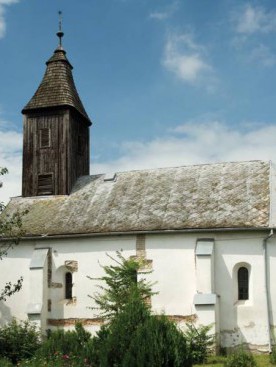The Calvinist Church – SzékelyThe village was mentioned for the first time around 1284. Its name hints to the fact that it might have been the place of abode of a garrison defending the artificial border strip (‘gyepű’) of the Hungarian Kingdom. The church was dedicated to Saint Michael and was mentioned first in 1324. In its present form, the edifice has a single nave and a semi-circular sanctuary of the same width and height as the nave. Buttresses fortify this building made entirely of bricks. Two windows spanned by semi-circular arches divide the frontispiece of the nave. The portal of the church is in the middle of the nave’s western frontispiece. An archivolt composed of lancet arches spans the portal leading to the narthex. Archaeological investigations carried out in 2007 lead to a surprising result. It came out that the initial sanctuary was demolished, and a totally new structure was erected during the middle of the 18th century. This came as a surprise since according to earlier opinions the sanctuary had been built during the rule of the Árpád-dynasty. Research results showed that the first church was already standing in 1324, and that the Bánk family belonging to the Hontpázmány clan had it erected probably at the end of the 12th and at the beginning of the 13th century. During the second building period, the western wall and the gate of the nave were torn down, and the church was extended in westward direction. Two windows spanned by semi-circular arches were opened in the southern wall of the nave, but the new entrance was again cut through the western wall. A lancet arch spans the portal and another lancet arch the gable above the portal. Explorations also revealed mural paintings on the inside of the nave’s southern wall. The two figures represent female saints, however, little has been preserved of these pictures: only the head of the one located to the east and the torso of the one located towards the western end of the nave. Arguably, these frescoes were painted in the 15th century. The refurbishment carried out in the 18th century involved not only the sanctuary, but the medieval chancel arch and the northeast buttress of the nave, too. All of them have been torn down. At the end of the 18th century and, later, during the 19th century, a series of repairs have been done to the building. These targeted the wooden ceiling, the roof and the furniture. |
















